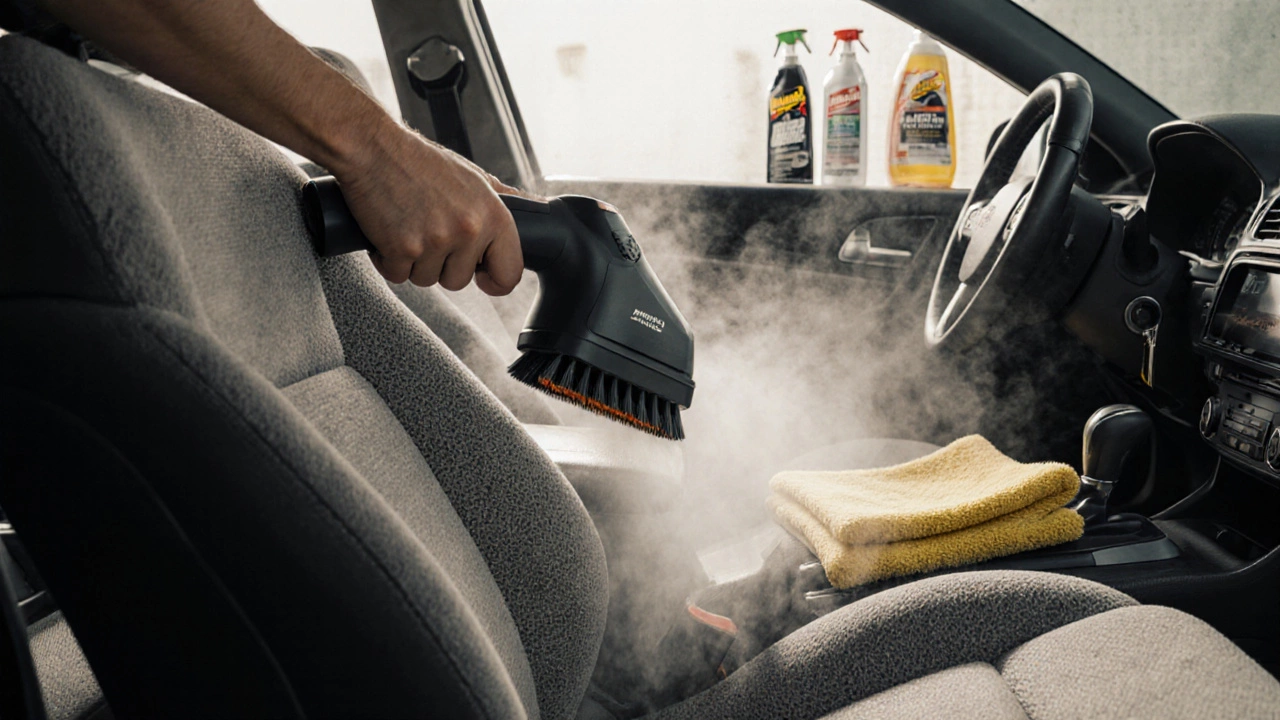Steam Cleaner Basics: Why It Matters for Everyday Cleaning
If you’ve ever wished you could clean a kitchen, bathroom, or carpet without chemicals, a steam cleaner is the answer. It turns water into hot vapor that loosens grime, kills germs, and leaves surfaces fresh. The best part? You only need water and a bit of know‑how, so you save money and keep the air safe for kids and pets. Below you’ll find the most useful ways to get the most out of this handy gadget.
Why Choose a Steam Cleaner?
A steam cleaner does more than just scrub away dirt. The high temperature (usually 200‑230 °C) destroys bacteria, dust mites, and mold spores on contact, which means you’re not just cleaning – you’re sanitizing. It works on tiles, grout, glass, upholstery, and even hardwood floors without leaving residue. Because there’s no harsh chemical involved, you avoid the sticky smells and the headache of ventilation. It’s also a fast tool: a few minutes of steaming can replace a whole cycle of traditional mopping.
Another perk is versatility. Most models come with attachments for narrow cracks, brush heads for stubborn stains, and a mop pad for large floor areas. Switching between them is as easy as snapping a piece on or off. If you’re looking to cut down on cleaning products, a steam cleaner can replace many of them, from bathroom cleaners to carpet shampoos.
Getting the Most Out of Your Steam Cleaner
First, fill the tank with cold water and let the unit heat up fully – usually 5‑10 minutes. Skipping this step means you’ll waste steam and get weaker results. When you start, work in small sections. Press the steam trigger for a few seconds, let the vapor soak the surface, then wipe or scrub with the appropriate attachment. For grout, let the steam sit for 30 seconds before scrubbing; the heat softens the grime, making it come off easily.
Keep the nozzle moving. Holding it in one spot can create water spots or even damage delicate surfaces. If you’re cleaning carpet, go slowly and overlap each pass; the steam lifts dirt while the pad absorbs moisture. Always test a hidden area first, especially on wood or painted surfaces, to make sure the heat won’t cause discoloration.
Maintenance matters too. After each use, empty any remaining water to prevent mineral buildup, and wipe the unit’s exterior with a dry cloth. Descale the machine every few months if you have hard water – most brands include a simple vinegar soak method. A clean steam cleaner runs hotter and lasts longer.
Finally, pair the steam cleaner with simple household tricks. A splash of white vinegar in the water helps cut through lime scale, while a few drops of essential oil give a fresh scent without chemicals. Use a microfiber cloth for final wiping – it traps the loosened dirt instead of spreading it around.
With these tips, your steam cleaner becomes a go‑to tool for a healthier, shinier home. Give it a try on a dirty tile floor or a grimy oven, and you’ll see the difference instantly. No more juggling multiple cleaners – just one device, hot water, and a bit of elbow grease.

What Do Detailers Use to Clean Upholstery? Tools, Products, and Techniques Revealed
Detailers use specialized cleaners, steam, and tools to remove stains and odors from car upholstery. Learn what products and techniques professionals rely on for long-lasting results.
Read More
Disadvantages of Steam Cleaning for Upholstery
Steam cleaning can be an effective way to clean upholstery, but it's not without its downsides. Potential issues include fabric damage, color fading, and excessive moisture problems. It’s important to know the limits of steam cleaning and consider alternative methods for delicate fabrics. The article explores these disadvantages while providing tips on how to mitigate these risks, ensuring that you achieve the best results without harming your furniture.
Read More